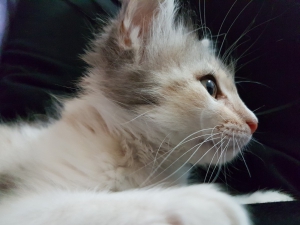We know so much about the furry felines that keep us company day and night — from their funny ticks to their food preferences – but do you know just what makes their noses so unique? Here are 5 interesting facts…
- The color of a cat’s nose is directly related to the color of its fur. Colors range from pink, black, grey/blue, chocolate, and even “lavender,” and sometimes become darker with age.
- A kitten’s nose is fully developed by the time it’s born, so it can learn to quickly distinguish its mother’s scent and get to know the other kittens in the litter (before it even has its sight or hearing!). Chemical smells and pheromones released from the mother’s glands are thought to reduce stress in kittens and provide them with a feeling of security and safety.
- Appetite is stimulated through the nose. Unlike humans, cats have very few taste receptors on their tongues, so hunger is stimulated through smell rather than flavor. If they can’t smell their dinner, they won’t necessarily want it!
- A cat’s nose is considered to be about fourteen times stronger than that of humans. This makes them excellent scent detectors, and they use their noses to identify territories, to detect chemical signals, and to get to know other cats. This also means there are strong smells they really don’t like, including citrus, mint, and tea tree oil.
- Cats communicate through chemical signals that they detect through smell. It’s hard for us to imagine communicating through smell – after all, humans rely on scent far less than our furry companions – but cats use their noses daily to understand the world around them. Oftentimes, if your cat is continuously scratching or marking furniture (or more preferably, his scratching post), he is leaving his scent, or “cat perfume,” which makes him feel secure in his surroundings — and he thinks it smells quite nice!



